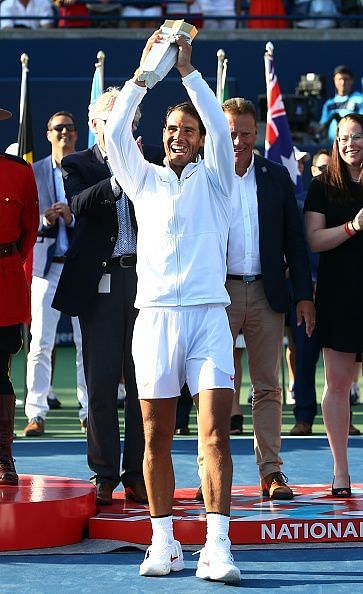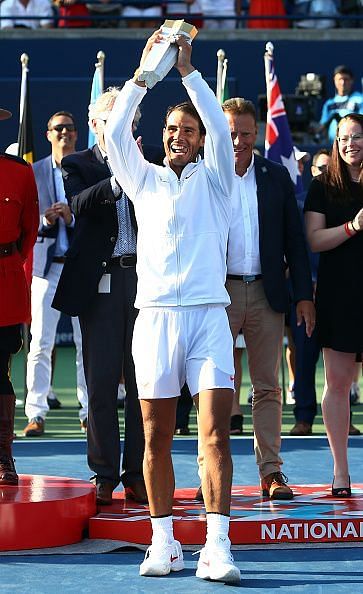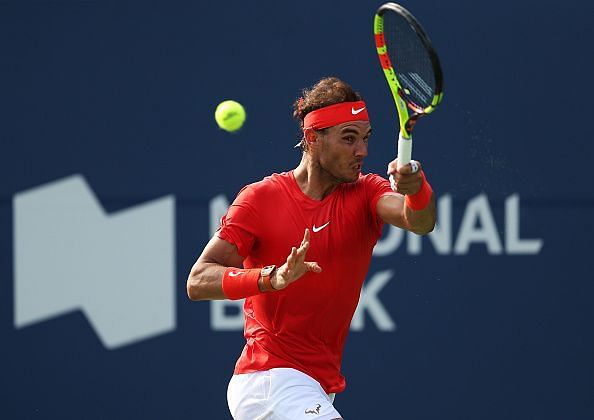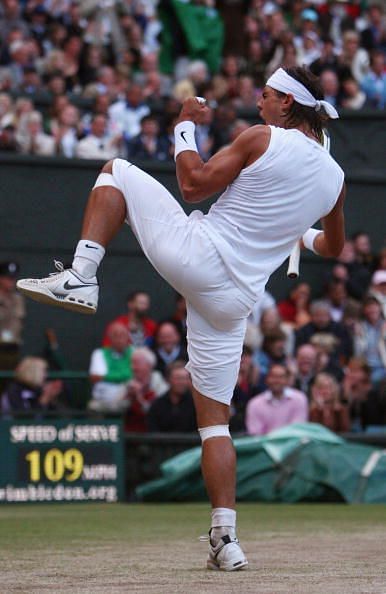
Cincinnati: Rafa's absence shows how he has matured as an athlete.

“
"What helps you decide if you’re going to play doubles since you’re not playing doubles in Toronto and have in the past?” asked a reporter after a third round win against Benoit Paire at The Rogers Cup in Toronto (which he went on to win), “Age. That’s all.” replies Rafael Nadal followed by what seemed like a celebratory chuckle along with all the media persons in the room. On the face of it, this seems like a harmless bit of fun. But there may be a few more layers to this statement.
Nadal has played doubles in Canada on a variety of occasions with separate partners . After a pretty spectacular win in Canada, fighting off intense competition from Wawrinka, Khachanov, Cilic and the fiery young turk from Greece Stefanos Tsitsipas in the final, Rafa began the summer hard court season on the highest possible note, after which came the unlikeliest of occurrences at the tour this year, his withdrawal from The Western & Southern open in Cincinnati.

To decipher his decision to withdraw may be difficult. But simply put, when he is fit, Rafa has never missed Cincinnati. Between 2004 and 2017, Rafa missed Cincinnati all of two times, due to career threatening injuries to the knee in 2012 and to the wrist in 2014. Cited by an array of pros as one of the best events on the tour, Cincinnati both as an event and as a title, is considered extremely prestigious. This, coupled with the fact that it’s a thousand points up for grabs along with the fact that it literally took injuries that threatened his career for him to miss the W&S open in the past, his absence in America's mid-west this year is more than a little strange.
Moreover, Rafa does not miss tournaments unless he absolutely has to. In all the years Rafa has gone into Flushing Meadows seeded at the top of the pile, he has played a vast array of tournaments. In 2008, he played a whopping seventeen along with the summer Olympics, 2010 and 2013 both saw him play twelve, and he played thirteen last year which saw him come back to the forefront of men’s tennis. However, this year, he travelled to Acapulco in February but pulled out at the last minute, apparently due to a strain in his calf which he sustained in training. But once again in June, after another dominant win in Paris at the Roland Garros, he pulled out of Queens. Yet again, after a strong win in Toronto he pulled out of Cincinnati stating 'personal reasons' and 'mental and physical health'. Coupling this and the tournaments he missed due to an injury he sustained at the Australian Open, his total for the year is at a mere nine tournaments having won four on clay and in Toronto the previous week.
Despite all of this, he maintains his spot at the very top of men’s tennis as well as maintaining the big gap between him and the rest. There may be a variety of factors that come into play for this. Firstly, it might actually just be age. At 32, as unlikely as it sounds, Rafa might actually finally be feeling the limitations of his body. The injury he sustained to his knee in the latter part of last year and the tear he sustained in his thigh at the beginning of this year may have awoken him to the fact that another serious injury may finish his career. This thought may have led him to prioritise tournaments according to the titles he wants to win, the points he has and most importantly, his fitness. Nadal is one of the few players that play every tournament of the clay season and his ability to back himself to defend the titles he won last year shows that he may ease up in terms of a number of tournaments played but his intensity on the court does not cease. This obviously plays a huge role in him maintaining his status as the best.
Also, the ease with which Rafa has held the world no.1 spot this year is perhaps the biggest indicator towards his dominance on the circuit. Over the last 18 months, the only real challenger for the top spot has been Federer, who at his age, plays even fewer tournaments than Rafa. It almost feels as if there is intense competition at a certain standard of tennis, and Nadal operates at a standard higher than that and is joined by a few at that standard on occasion.
Everything said and done, the Nadal of 2008 and the Nadal of 2018 might have the same characteristics that give him the edge over his competitors but they also have distinct differences that have played to his strengths in both eras. When Nadal takes his place on the court now, he is no longer the long-haired gladiator in a sleeveless shirt and those iconic long shorts who fights for every point, match and a tournament like it is his last. He is the cool, calm, collected world no.1 who will fight tooth and nail to keep it that way and to ensure that the point, match or tournament he is playing is not his last.

Nadal goes into the US Open with his work cut out for him. Novak Djokovic, who recently had a ground breaking win in Cincinnati making him the only player in history to have won all ATP Masters 1000 events and who is also one of three players to have beaten Rafa this year winning an epic semi final on his way to getting his hands on the Wimbledon trophy, is probably Rafa’s greatest competitor in New York. But with Federer, who may not have had the best 2018, but still has the tendency to raise his game on the big stage and the likes of Cilic, del Potro, Zverev, Thiem and Dimitrov who have shown glimpses of quality this year along with Andy Murray and Stan Wawrinka on their way back to the highest level of tennis, US Open 2018 looks to be one of the most intriguing and mouth-watering grand slams in recent years. Yet, as Rafael Nadal walks onto the Arthur Ashe Stadium court on the 27th of August, he remains the strong favourite to defend his crown in Flushing Meadows.